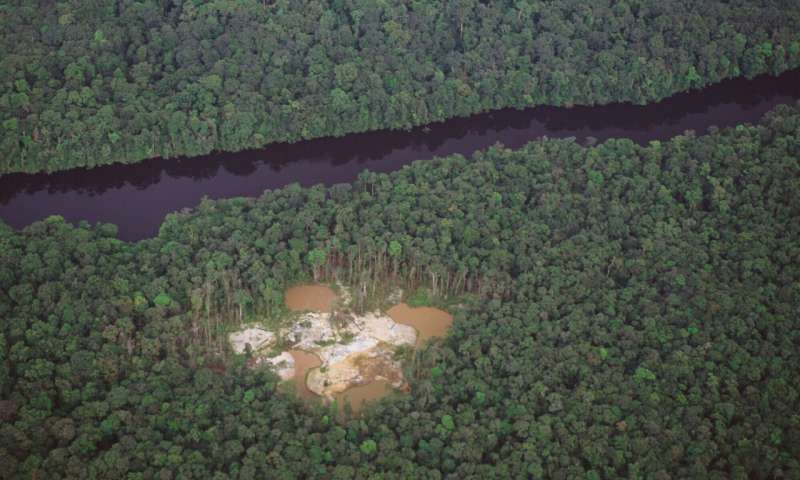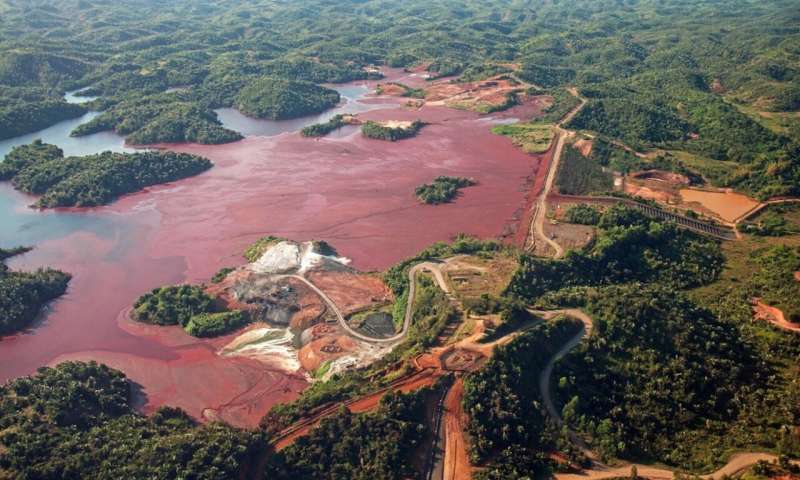Promoting smarter ways to mine within fragile forests

Many of the planet's most valuable mineral resources are to be found within and beneath forested landscapes. And our insatiable appetite for material goods and services—everything from basic essentials to the latest, must-have gadget—is driving global demand for industrial quantities of the minerals and precious metals that form vital components of those products.
Forests are havens – spiritual, ecological, cultural, carbon havens. Widely referred to as the lungs of the Earth, they still cover about a third of the planet's surface, but the world has lost more than half its original forests and that figure is increasing by the day. In 2017 alone, the tropics experienced 15.8 million hectares of tree-cover loss – an area roughly the size of Bangladesh. Logging and agricultural conversion are the main causes of forest destruction and degradation, but mining is a major contributor in its own right, exacerbating an already parlous situation.
It is in fact the indirect impacts of mining activity on a forest ecosystem that are most devastating. The widespread loss of forests not only depletes wildlife populations and reduces species richness, but also has adverse, in some cases irreversible, effects on, for example, water regulation, protection against natural hazards, and—last but not least—carbon storage. According to figures released by Global Forest Watch Climate, if tropical deforestation were a country, its greenhouse gas emissions would exceed those of the entire European Union, and of every other individual nation except China and the United States of America.
Forests contribute around two percent of global gross domestic product (GDP) and provide employment – formal or otherwise – for an estimated 50 million people. But that's just the tip of the iceberg. More than a billion people, or a fifth of the global population, may depend directly on the goods and services generated by forests, including fuel, food, fibre and flood protection. Ultimately, however, everyone on the planet relies on the clean air, fresh water and climate stability afforded by these forests. Their true value is incalculable.
Which makes it all the more important to minimise the impacts induced by mining activity. There is an urgent need to adopt more 'forest-smart' approaches to mining in order to ensure that development of the sector does not come at the expense of forests, biodiversity or the essential ecosystem goods and services that these provide for people.
With this in mind, the World Bank commissioned Fauna & Flora International (FFI), along with Levin Sources and Swedish Geological, to examine what measures a representative cross-section of large-scale and artisanal mining operations were taking to minimise – or offset – their forest footprint. We undertook 52 case studies across 26 countries and synthesised our findings in a series of reports. Launched officially at Chatham House in London this Friday (10th May), they tell a sobering story, but also identify a clear path forward.

Perhaps unsurprisingly, there is a lot currently wrong with mining in forest ecosystems, and we found evidence of its direct impacts and side effects: forest loss and fragmentation, soil erosion and water pollution, poaching and land conversion to agriculture, loss of biodiversity, invasions of migrants into land occupied by indigenous communities, clashes over land tenure and rights … the list goes on. In many cases these problems are aggravated by inadequate laws and regulations, weak or corrupt governance and the inability of local peoples to contend with, manage or stand up to the loss of their livelihoods or access to traditional resources. There are exceptions, however, and we encountered several examples of companies and governments practising forest-smart mining, albeit inconsistently.
Mining in forests occurs across the globe, and in 2015 1,539 large-scale mines—almost half of all active mines—were operating in forest landscapes. A further 1,826 were in development or non-operational. Significantly, more than half of large-scale forest mines are in low- or lower-middle-income countries, and three-quarters are in World Bank client countries. Forests play a crucial role in sustaining growth across a number of sectors including agriculture, energy, infrastructure and water. FFI and its partners aim to support the World Bank Group and its clients in ensuring that mining in forest landscapes contributes to the Sustainable Development Goals. Based on the good and bad practices identified and lessons learned through the three studies, a set of principles has been formulated to support the development of context-specific forest-smart mining approaches.
Making mining forest smart is an imperative. We join our collaborators in a call to action to apply forest-smart principles and safeguard the future of our forests.
More information: Making Mining Forest Smart—Executive Summary Report: www.profor.info/content/making … utive-summary-report
Large-Scale Mining Report: www.profor.info/content/forest … scale-mining-forests
Artisanal and Small-Scale Mining Report: www.profor.info/content/forest … nses-artisanal-small
Provided by Fauna & Flora International




















